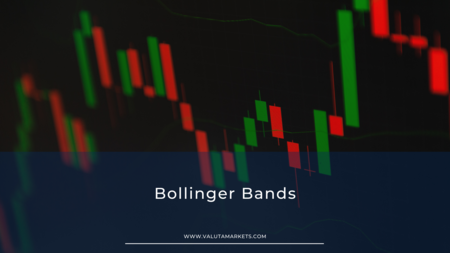Bollinger Bands are price envelopes that define the upper and lower levels of price ranges. It is a chart indicator used widely by traders for technical analysis in the forex, futures, and stocks market. The chart was created by John Bollinger in the 1980s and is plotted at a standard deviation level, allowing the bands to adjust with swings of an underlying price.
The bands feature a volatility indicator that measures the relatively high and low of a security’s price in correlation with previous trades. Bolinger bands have two parameters; period and standard deviation, which measure volatility by increasing or decreasing.
Bollinger bands are also very dynamic, making them suitable for trading a wide range of securities.
Components of Bollinger Bands
The Bollinger Bands feature three lines:
1. Upper Band
The upper band is two standard deviations above the moving average. The upper band measures the maximum positive deviation.
2. Middle Band
The middle Bollinger Band is a moving average used for trade entries when touched by the candlestick.
3. Lower Band
The lower band is usually two standard deviations below the middle band, which is the moving average. The lower band measures the maximum negative deviation.
The position of the bands gives traders insights into how strong trends are and how high or low price levels will potentially be.
How to Use Bollinger Bands to Trade
Here are ways investors can use Bollinger Bands to trade.
1. Trend following
As aforementioned, one of the most common uses of Bollinger Bands is giving traders insights into prices. Trend following is a popular trading strategy used by traders using Bollinger Bands. It involves buying securities when other investors are selling.
The strategy essentially entails jumping on an already existing trend. To leverage the strategy, traders should pay attention to the middle and upper bands during an uptrend, and during a downtrend, they should pay attention to the middle and lower bands.
During an uptrend, it is expected that the price will move with the bands. And a downward trend or a bear market will emerge when the price moves below the middle band.
2. Trading on volatility and reversal
Investors make much more money during volatile periods than when there is stability. This is a strategy commonly used by experienced traders as trading on volatility is risky for beginners. During volatile seasons, price movements are broad.
Worth noting is that volatility is highest when there is about to be a reversal. The width of the bands is a good indicator of volatility. The wider the bands, the higher the volatility, and the closer they are, the less volatile it is.
3. Identification of breakouts
Breakouts happen when securities suddenly change direction after a consolidation period. Bollinger Bands are instrumental tools for identifying breakouts. The formation of the Bollinger Bands will signal you when a breakout is about to happen.
The indicator for an approaching breakout is bands that are squeezed. For instance, when the squeeze is spotted when there is a strong upward move or a bullish flag, it is a sign of a bullish breakout.
However, the bands may not give you signals on the breakout direction, so traders need to incorporate other technical analysis tools or trading strategies.
4. Overbought and oversold trade signal
Investors use Bollinger Bands to spot overbought and oversold market conditions. Overbought market conditions are when a security trades below its fair value. Overbought is short-term price movements with expectations of a price rally.
On the other hand, an oversold market condition is when securities are trading at a price believed to be below the fair value with a possible price bounce. The market condition is long-term; hence the possibility of a rally coming soon or coming at all is not guaranteed.
Traders are able to identify overbought conditions when the prices break above the upper band and an oversold when the prices break down the lower Bollinger band.
By identifying overbought and oversold market conditions, traders are able to determine when to buy and sell stocks or trade in the forex, commodities, and even the options market. Traders can also use other charting indicators alongside the Bollinger Bands.
Conclusion
There are tons of things you can do with Bollinger Bands when trading. You could use them to identify oversold and overbought market conditions, trend following, breakouts, volatility, and trading.
While Bollinger Bands are useful tools for technical analysis, there are some limitations traders should be versed with. One of them is that the tool is reactive but not predictive. Therefore, you may need to combine it with other technical analysis tools and fundamental analysis to make trading decisions.
Bollinger Bands is a lagging indicator, meaning it can sometimes give wrong signals as it is slow to react.

